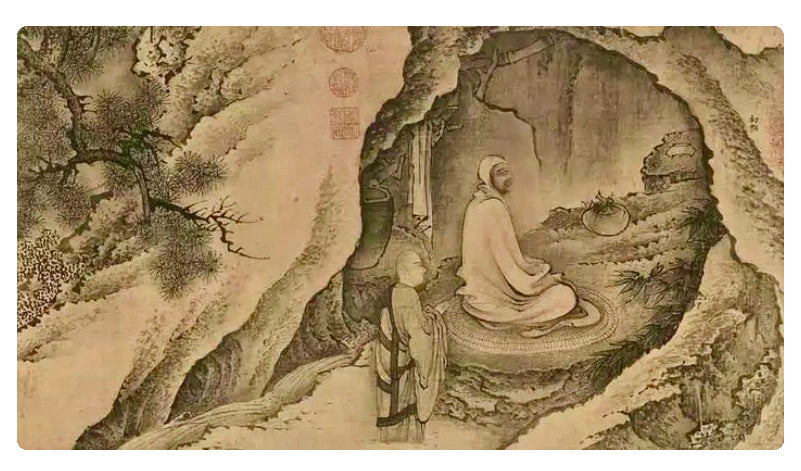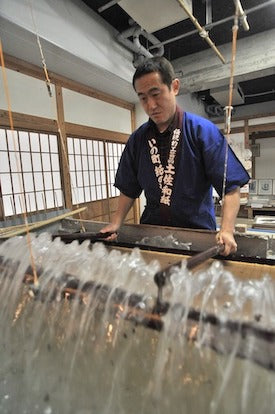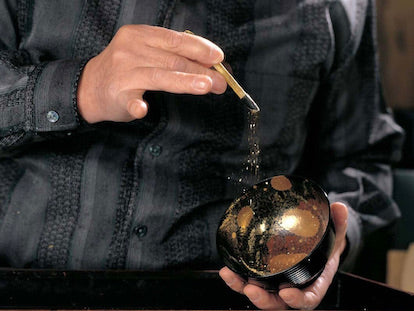The historical Bodhidharma was an Indian sage who lived sometime in the fifth or sixth century AD. He is the undisputed founder of Zen Buddhism, and is credited with the Ch'an Buddhism introduced to China during his travels to the Middle Kingdom. (Note: Zen Buddhism is the term used in Japan, but Daruma’s philosophy arrived first in China, where it flowered and was called Chan Buddhism, recognized by the School of Mahayana Buddhism. Only centuries later does it bloom in Japan, where it is referred to as Zen). There are countless legends, some conflicting, about this sage. The best-known legends say he attained enlightenment, (satori), after meditating in a cave for eight, (some say nine years), without blinking or moving his eyes. During those years of meditation, it is said that his arms and legs atrophied, shriveled up, and fell off. Daruma is depited in many forms, sculpted or naturally formed.
The Folktale
If a tree falls in the forest, and someone hears it, is that the plaintive cry of a kodama? Because that is what ancient tree-worshipping Japanese people thought. The Japanese have always known that some trees were special. For whatever reason—maybe because of an interestingly shaped trunk, or a sequence of knots resembling a human face, or just a certain sense of awe—some trees were identified as being the abodes of spirits. Some believed that kodama were not linked to a single tree but could move nimbly through the forest, traveling freely from tree to tree.
In ancient times, Kodama were said to be Kami, nature deities that dwelled in trees. Whatever form they took, (i.e., Daruma), Kodama were said to be possessed of supernatural power, that if properly worshipped and honored, would protect families and villages. The first known mention of tree spirits is in Japan’s oldest known book, the Kojiki, (book for ceremonies, customs, divination, and magical practices of ancient Japan), that tells about the tree God, Wakunochi-no-kami. Around the Edo period, Kodama lost their rank as gods of the forest and were included as just one of Japan’s ubiquitous Yo-kai. Kodama became humanized as well—there are stories of Kodama falling in love with humans and taking human shape in order to marry their beloved. As research shows, after the Edo period, Kodama were reimagined in books as children’s tree spirits, (ghosts), and fairytales, and of course featured in movies like the Lord of the Rings Middle-earth beings called Ents. Additionally, research relates these root carvings to the Kodama tree spirits, which appeared in Studio Ghibli’s Princess Mononoke.

Daruma Root Sculptures — “Work done by Humans and Determined by Nature”
This statement attaches great importance to making use of the traits of the natural root, such as the fibers, holes, knurls, veins, color, and luster. Most wooden images of Daruma most likely began with the fashioning of crude representations of spirits of the mountains, (Hama no kami). Most carvers of this type of figure are buddhist monks, but there are two famous buddhist carvers by the names of Enkuu and Mokujiki Myouman, who utilize a technique called hatchet carving, (Natabori) in which the piece is made from a single block of wood, and left unfinished, showing the marks of the cutting tool.
These Daruma figures are made from sacred trees which are discharged from the service of protecting the sanctified grounds of a shrine. They smell of cypress, with no two figures alike, and are different because of the individual nature of each tree. They are said to hold the spirit within each figure. The figures below are by a Shikoku artist, Zōgetsu, who rarely signed his name on his religious creations, unless they were for an auspicious occasion, which were then presented in a signed Kiriwood box. All are from the nineteenth century.




